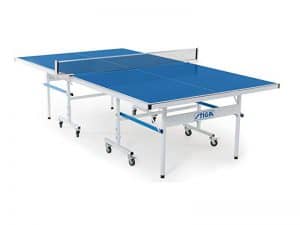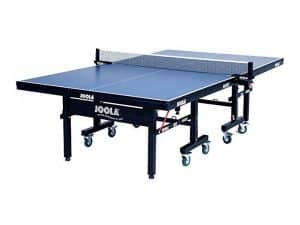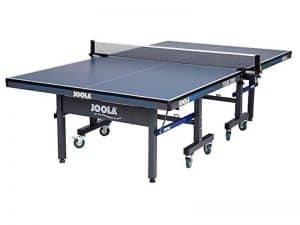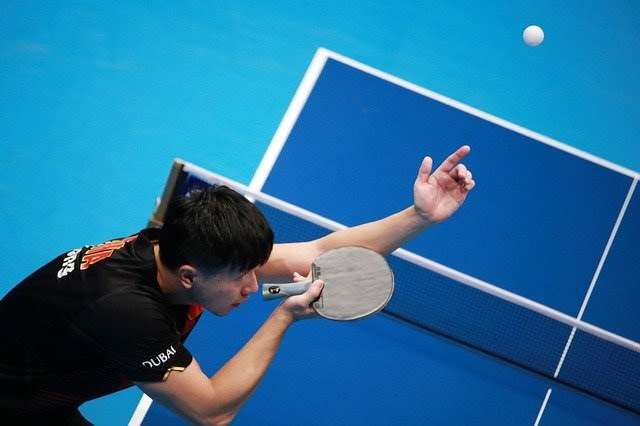Basic Table Tennis Skills You Need To Know
- Eugene Sandoval
- Last updated
Table tennis is a complex, layered game, and mastery requires a balance of mental strategies and physical skill. But even the most complex game is built on the foundation of four basic skills that even a beginner can learn and practice to improve their game. Practicing the basic table tennis skills improves your performance and your enjoyment and allows you to develop more advanced skills later on. Here are the basic skills of table tennis.
Do you want more advanced coaching?
- 20+ Hours of Training
- From Beginner to Master
- Coached by Chinese National Champion
Table of Contents
Stance and footwork
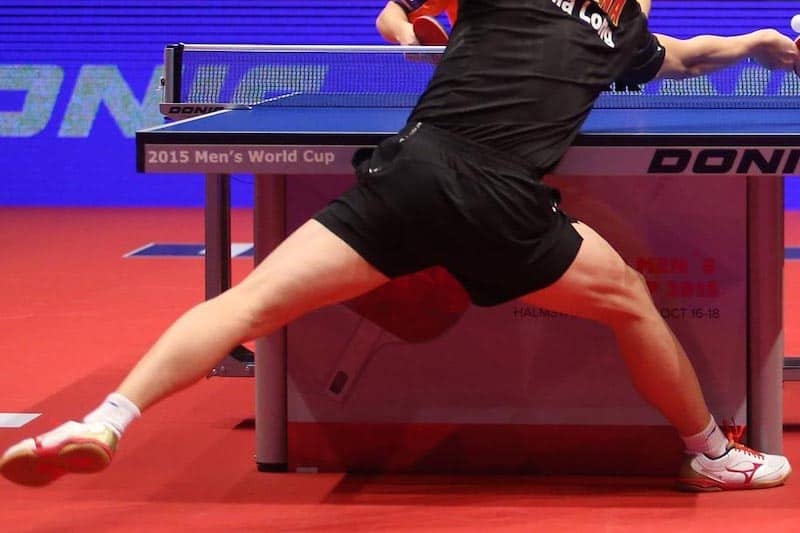
Before hitting your first shot you’ll want to get in the “ready” position with a slight forward crouch, shoulder width feet, and slightly bent ankles and knees. A correct and stance in relation to the table depends to some degree on your grip, and whether you’re are attacking, defending, or serving the ball. However, even as your arm position and placement relative to the table changes, you should always have the correct stance, footwork, and body posture. The right stance gives you the balance, stability, and range of movement you need to play the game.
When I started, I didn’t realize how important my feet were, since I was so focused on my shots. Here’s what you need to know.
Feet
Your feet should be wide, about 1.5 or more shoulder widths apart so that you can quickly move side-to-side. Keep your non-dominant foot slightly ahead of the other (for right-handed people, this means keeping your left foot slightly closer to the table, for left-handed people it’s the opposite).
Ankles and knees
Keep your knees and ankles slightly bent and flexible, with your weight forward on your toes. This keeps your body ready to move forward or backward as needed.
Back and shoulders
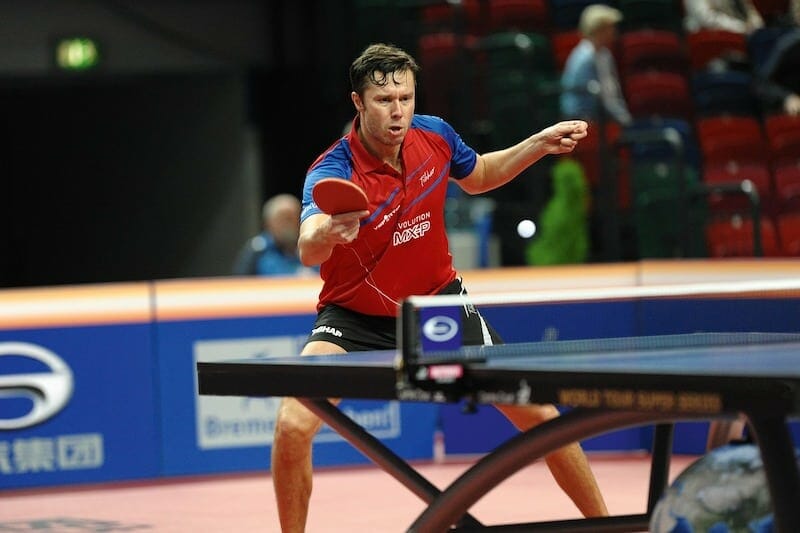
Keep your upper body slightly bent at the waist. With the bent ankles, knees, and waist and your shoulders forward, your whole body is in a slightly crouched position, ready to spring into action.
Arms
Your arms should be in front of your body, with your elbow and paddle in front of you.
Holding the paddle
The exact position of your hands and arms in your stance depends on your grip or how you hold the bat. There are two basic grips in table tennis: the shakehand grip, and the penhold grip. The different types of grip have specific variations for your hand position on the paddle depending on your preference and style of play.
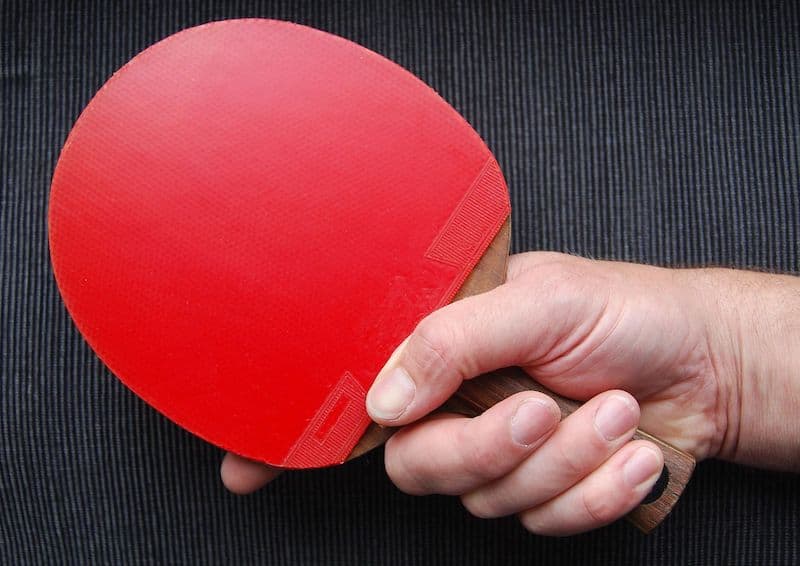
The way you hold your racket has advantages and disadvantages, but it’s also important to choose the table tennis grip that is comfortable and natural for you. Your index finger and thumb placement will make a big difference. Once you have mastered a basic grip, you may want to learn more advanced grips to further improve your game and give you more options.
I like The Shakehand Grip because it offers a balanced blend of control and power, making it the ideal choice for table tennis players aiming to dominate the game.
The four basic table tennis strokes
The four basic strokes of table tennis are necessary to master forehand and backhand attack and defence.
Forehand Drive
The forehand drive is the most basic and fundamental ping pong stroke. It returns aggressive/attacking strokes and lands your ball close to the opponent’s baseline or sideline. With the forehand drive, you rotate your body to the back to add power to the ball, so rotate the upper body away and transfer your weight onto your back foot, moving your arm straight back.
As soon as the ball hits your side of the table, rotate your body toward it, shifting your weight forward. Hit the ball at the peak of the bounce, adding speed at impact to impart sidespin, topspin, or backspin. After you have struck the table tennis ball, continue the motion to rest with your paddle pointing upward. For a great demonstration of the forehand drive, check out the video.
Want to try loops? Check out the full post about forehand loops.
Backhand Drive
The backhand drive is the mirror of the forehand drive, intended to return attacking shots and land the ball at the opponent’s baseline. To deliver a backhand drive, stand with your torso in the path of the ball (rather than reaching with your arm), and keep your stance angled toward the table with your free arm pointed toward the ball.
Your waist should bend forward and lift upward as you move your paddle arm forward and upward, hitting the ball at the top of its bounce and completing the forward and upward motion. Check out this video for a demonstration of the backhand drive.
Backhand Push
The backhand push returns short balls, and prevents your opponent from making an attacking return. As with the backhand drive, your body should be positioned in line with the ball, rather than reaching to the side with your arm.
Sweep your arm forward from your chest, letting the paddle swiftly brush underneath the ball at its peak. Aiming downward toward the table or forward to the net imparts various amounts of spin, so this is a controlled stroke. Here’s a great demonstration video.
Forehand Push
The forehand push is also designed for returning short balls and preventing attacking shots. Like the forehand drive, you stand with the dominant foot slightly back, and rotate the upper body to accentuate the motion of the paddle. However, unlike the forehand drive, you do a smaller backswing, rotating your wrist forward through the range of motion, and keep your paddle open to brush beneath the ball. For a demonstration of the forehand push, check out this video.
Serving
A table tennis serve is the final basic skill, and it’s a crucial skill since the serve is the only time you have complete control of the ball and the game. There are a number of different types of serves each with different pros and cons but the basics remain the same.
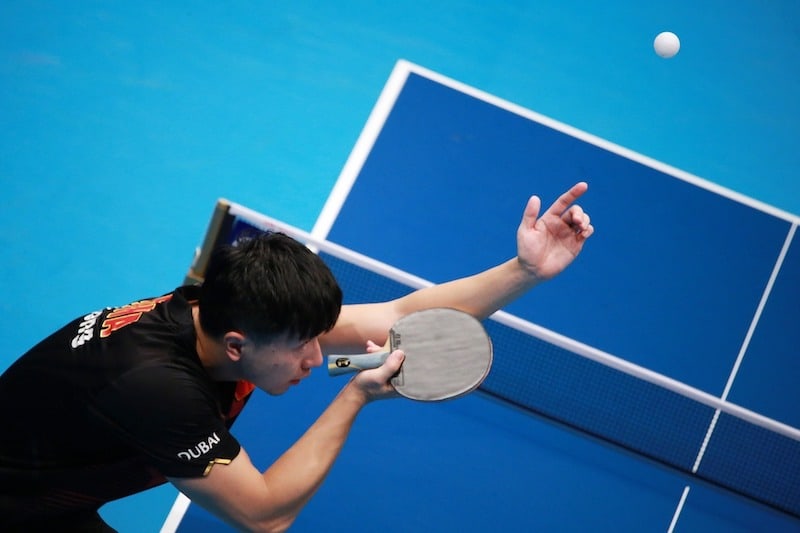
To serve in table tennis:
- Balance the ball on the palm of your free hand with the hand open.
- Throw the ball vertically upward so that it rises at least 6 inches above your hand.
- As the ball drops, hit it with your chosen stroke, ensuring that it bounces on your side of the table, goes over the net, and bounces on your opponent’s side of the table.
But there is a lot more to a good table tennis serve than the above description. If you want more information on the rules and a guide to the different types of service check out our post on how to serve in table tennis here.
Conclusion
These basic skills are always worth practicing and drilling, no matter how experienced a player is because all advanced skills are added to these fundamentals. It’s definitely worth dedicating some alone practice time to each type of shot. Mastery of the correct technique not only improves your game but can help prevent strain and make the game more enjoyable. Learning the basics is the first step on your way to becoming a champion.
More Related Topics:
- Best Table Tennis Return Boards
- Official Ping Pong Rules
- Cheap Ping Pong Paddles
- Best Table Tennis Paddles
Eugene (Gene) Sandoval has been one of those guys who spent too many hours around ping pong tables in high school. However, soon enough, Gene understood that there is more to ping pong than having fun. That is how he started a journey that made Eugene one of the experienced semi-professional ping pong players in the United States. As the founder of the PingPongRuler, Eugene spends most of his time surrounded by ping pong tables and research. He always has this knack for coming up with new ping pong strategies and telling the good and bad equipment apart.
-
Eugene Sandovalhttps://pingpongruler.com/author/admin/
-
Eugene Sandovalhttps://pingpongruler.com/author/admin/
-
Eugene Sandovalhttps://pingpongruler.com/author/admin/
-
Eugene Sandovalhttps://pingpongruler.com/author/admin/
Popular Products
Join our email list for exclusive reviews & the latest Ping Pong News
Sign up to our newsletter and stay up-to-date with the latest news in the ping pong world, and be the first to read our new product reviews. We promise, no spam






